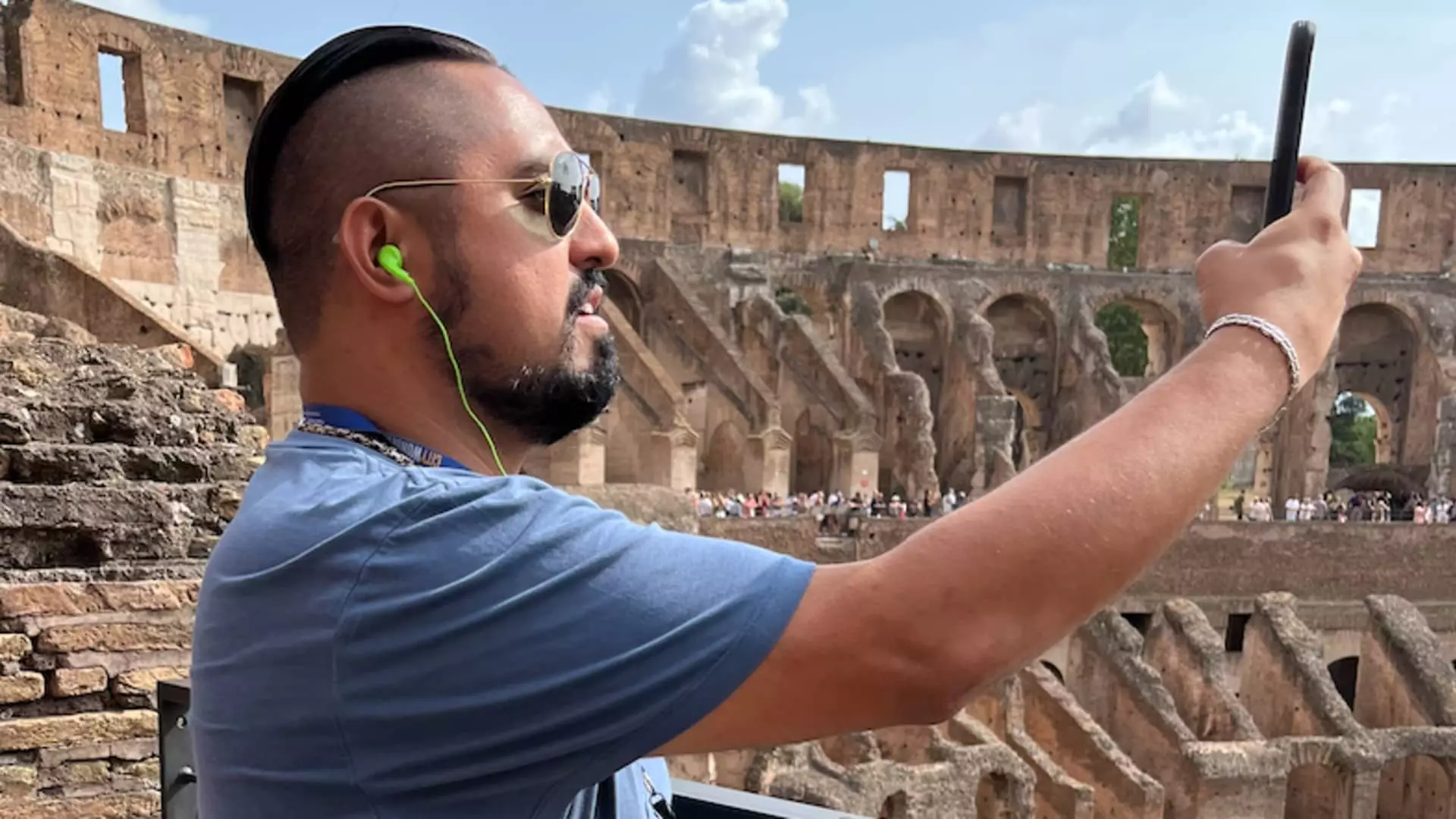When one thinks of Rome, images of ancient architecture, rich history, and vibrant culture immediately spring to mind. These are the things that beckoned my mother and me to embark on a magnificent journey to celebrate her 60th birthday in the Eternal City. Yet, amidst the grandeur of iconic landmarks, I found myself intrigued by the integration of technology into travel experiences. During our visit to the Pantheon, the clash and blend of human history and artificial intelligence became strikingly apparent.
Standing beneath the scorching sun, we waited eagerly for our audio tour of the Pantheon to start. With time on our hands, I decided to engage ChatGPT, an AI tool that had increasingly become a part of my digital life. At first, I received a list of facts about the Pantheon, which, while informative, lacked the enchantment one hopes to feel in front of such a historical marvel. So, I decided to reframe my inquiry and asked it to adopt the persona of a tour guide.
“Welcome, Chef, to one of Rome’s most extraordinary treasures,” the AI responded, initiating a narrative that started to breathe life into the sterile bullet points. As we stood before this architectural wonder, the chatbot whisked us back in time, illustrating the Pantheon’s connection to gods, emperors, and artists—all within its sacred embrace. The innovative approach of pairing technology with historical storytelling transformed a mundane wait into a captivating experience that sparked both curiosity and awe.
Our trip was part of a seven-city whirlwind to celebrate a milestone birthday, a commemoration winding through Italy’s art-laden landscapes. As I navigated through ChatGPT’s myriad capabilities, I discovered that its grasp extended beyond mere historical facts. Apart from helping me pick out films or drafting agreements, it presented itself as an insightful travel companion. For instance, once we stepped inside the Pantheon, ChatGPT directed our gaze upward to the dome, the world’s largest unreinforced concrete dome, expertly melding history with the marvel of engineering.
During our explorations, ChatGPT became an invaluable resource. It recounted stories about various sights, from the imposing Trevi Fountain to nuanced tales behind Rome’s art-scattered streets. In an age where artificial intelligence is forecasted to be a trillion-dollar industry, it proved to be more than a mere Google search but a sounding board for enriching our understanding of Italy’s rich culture.
Despite the effectiveness of my virtual companion, I made a conscious choice to immerse myself in the traditional sights and sounds of our travels. Human guides brought a level of charisma and historical depth that AI simply cannot replicate. For example, during our time in Vatican City, we encountered Amy, a knowledgeable guide whose deft maneuvers through long lines and skillfully curated storytelling revived the tales behind each brushstroke and sculpture, climaxing in the breathtaking Sistine Chapel.
Moreover, the interaction with human guides provided a tactile experience that digital explorers cannot offer. We visited the memorial site of Julius Caesar’s cremation, went on a boat tour of Cinque Terre’s quaint coastal villages, traversed the vineyards of Tuscany, and even learned about the cinematic history of Venice, linked to George Clooney’s glamorous villa in Lake Como. These instances reminded me that technology should complement rather than replace the invaluable contributions of human experiences.
One particularly memorable moment occurred when we wandered across the piazza from the Pantheon into the enchanting Santa Maria sopra Minerva. The church, often overlooked by tourists, lured us in with the promise of tranquility. Using ChatGPT to uncover hidden treasures within its walls, I discovered Michelangelo’s Christ the Redeemer, a stunning sculpture that captures both the divinity and humanity of Christ.
Our encounter with this artwork was intimate and personal, devoid of the chaotic crowds that typically plague the art hubs of Florence. While we would later have to jostle for a photo of Michelangelo’s famed David, here, before Christ the Redeemer, we found quietude and a connection that digital interfaces simply cannot replicate.
As I reflect on our adventures throughout Italy, it’s evident that the combination of traditional travel and modern technology enriched my experience immensely. Just as the Pantheon intertwines various architectural styles, so too does our journey represent a blend of human and artificial elements. Technology, particularly AI, serves as an innovative enhancement to exploration while keeping its roots in the ever-relevant human touch. As we celebrate milestones and absorb the ancient allure of cities like Rome, the path forward is clear: embrace the best of both worlds.

